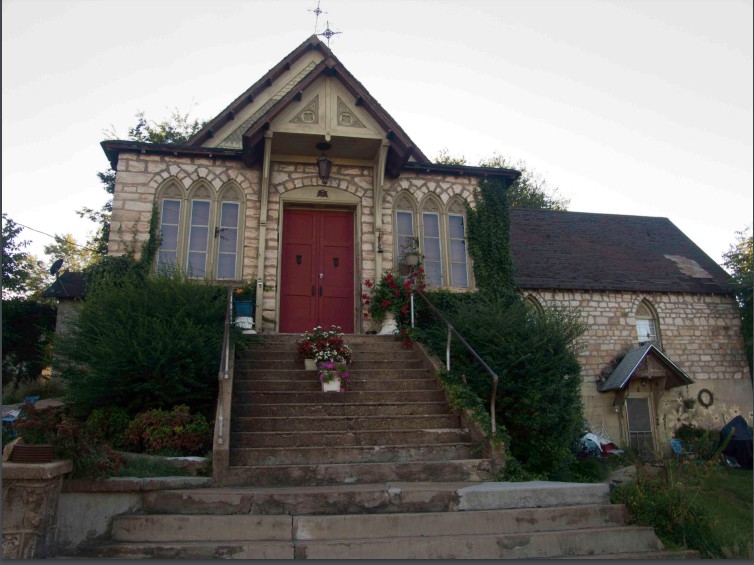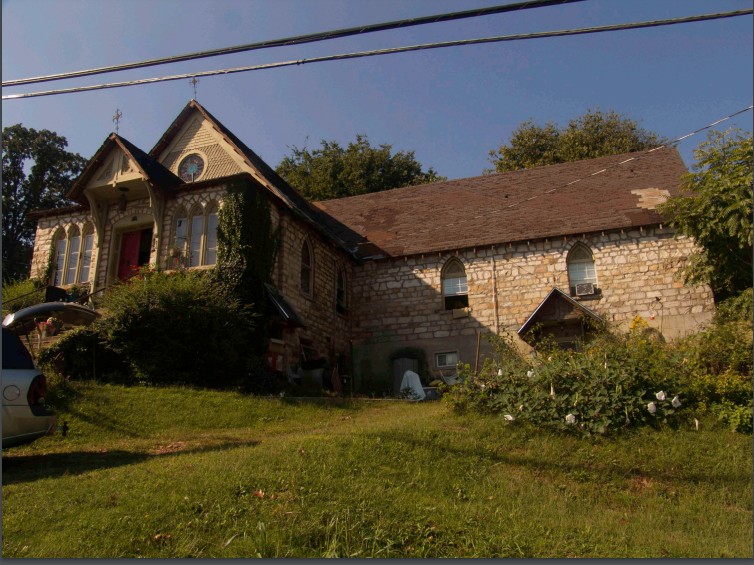Church of the Holy Trinity
Introduction
Text-to-speech Audio
This Gothic Revival Church building was constructed from 1901 to 1902 and was home to the Church of the Holy Trinity, The First Christian Church purchased the building during the 1920s and used it until the 1990s. During the 1950s, that congregation also added a fellowship hall, baptistery, and classrooms. Today, the church building serves as an example of Thayer's early growth, which coincided with the arrival of the railroad.
Images
Church of the Holy Trinity

Church of the Holy Trinity

Backstory and Context
Text-to-speech Audio
Founded in 1885 as a division point for the Kansas City- Springfield and Memphis Railroad, Thayer emerged as a town only after plans to establish a division point in Mammoth Springs, Arkansas (a few miles south of Thayer) failed to materialize. A landowner near Mammoth learned of the railroad's interest in his property, so he substantially raised the asking price of his property, pushing officials to look for another option near modern-day Thayer, which had been inhabited by residents well before its formal incorporation in 1885. The original town plan, originally called Division, Missouri, called for street and building development east of the railroad tracks. However, railroad employees and their families built their homes on the west side of the tracks where shops and tradespeople already operated their businesses. Some of the temporary housing also served as hotels and restaurants, and saloons appeared, as well. So, by the time the official plans arrived the city already enjoyed development west of the tracks; thus, officials adjusted the plans accordingly.
The town of Division changed to Augusta before finally becoming Thayer in 1886, named after a wealthy stockholder in the railroad, Nathaniel Thayer of Boston, Massachusetts. Like innumerable towns of the late nineteenth century, industrial and economic growth occurred concurrently with the railroad's success.
The railroad proved intrinsic to the development of Holy Trinity. In 1891, the Bishop of the Missouri Episcopal Dioceses stated in a newsletter a need to send an organized mission to Thayer. In the August 1895 edition of Church News from the Episcopal Dioceses of Missouri, the update about Thayer stated that the increased number of railroad employees moving to the town included those seeking to find a place of worship, and it stated that bi-monthly church services took place in the home of Mr. L. Garrett, a chief train dispatcher. Mr. Garrett later donated the land for the construction of the church. The bishop routinely made reference to Thayer as a railroad town in his newsletters. For instance, in 1901, the bishop argued that Thayer's presence as a railroad town made it one of the best missionary points in its diocese. Construction on The Church of the Holy Trinity began that same year, with the laying of the cornerstone on May 21, 1901, and ended with its opening eleven months later on April 9, 1902.
The historic church is the only church in the community constructed in the Gothic Revival style. In addition to the typical Gothic features, the designers included intricate interior detailing, and built elaborate and colorful cathedral glass windows. The Episcopal Church occupied the Church of the Holy Trinity until its congregation grew too small to maintain the church. In 1923, the Episcopal Church sold the building to the First Christian Church of Thayer, whose members occupied it until the 1990s. During that time, the First Christian Church added a fellowship hall, baptistery, and classrooms.
Sources
Franke, Kenneth and Gloria Wood. "Registration Form: Church of the Holy Trinity." National Register of Historic Places. mostateparks.com. 2017. https://mostateparks.com/sites/mostateparks/files/Church%20of%20the%20Holy%20Trinity.pdf.
Williams, Walter. The State of Missouri. The Missouri Commission to the Louisiana Purchase Commission. 1904. Digital copy created by Google Books in 2010 located at https://ia600709.us.archive.org/7/items/statemissouri00willgoog/statemissouri00willgoog.pdf.
https://mostateparks.com/sites/mostateparks/files/Church%20of%20the%20Holy%20Trinity.pdf
https://mostateparks.com/sites/mostateparks/files/Church%20of%20the%20Holy%20Trinity.pdf
